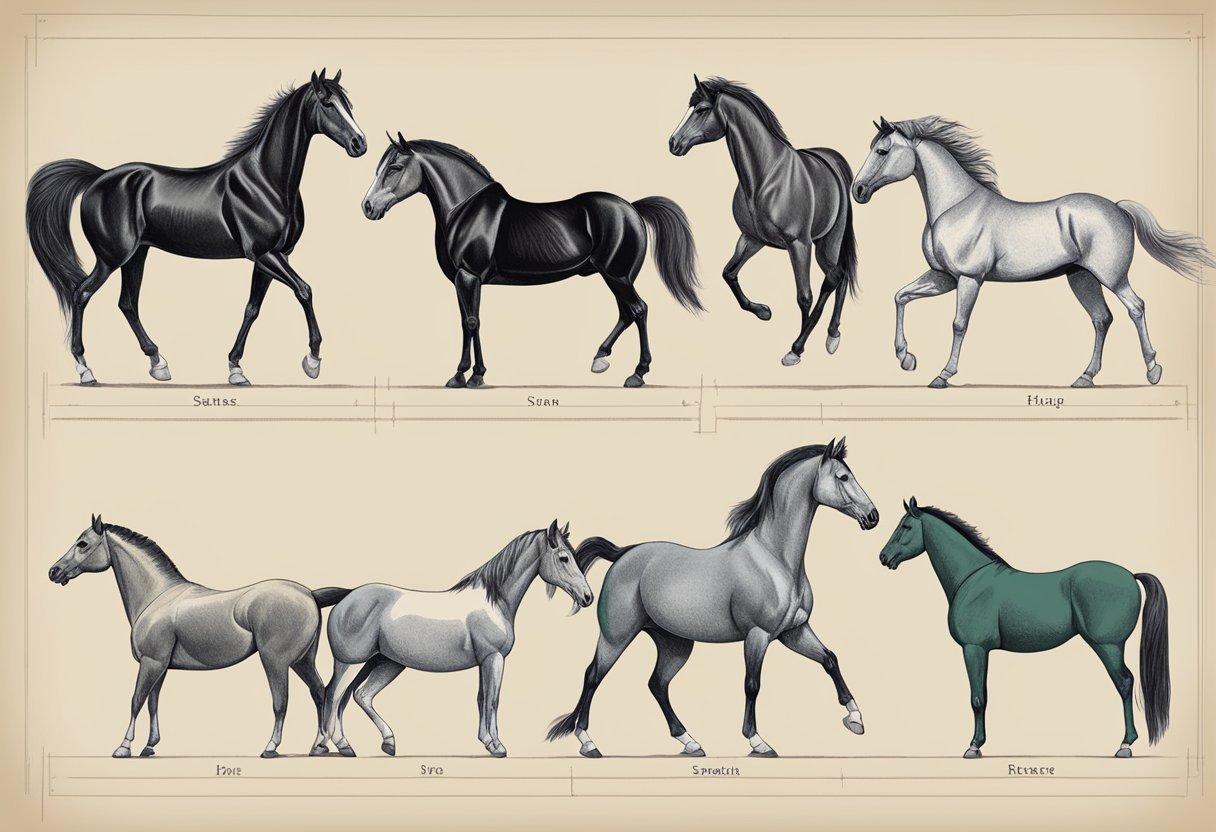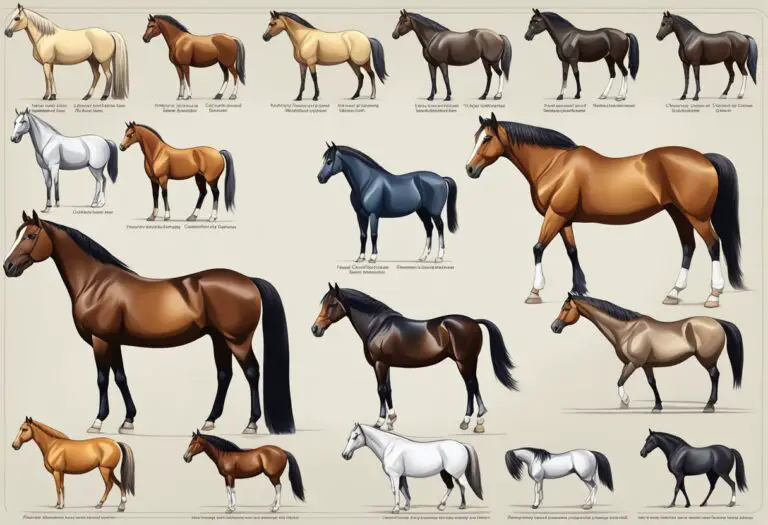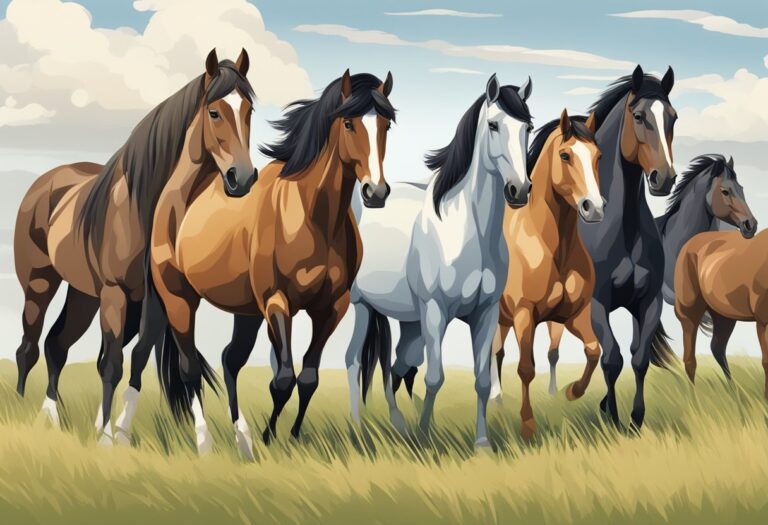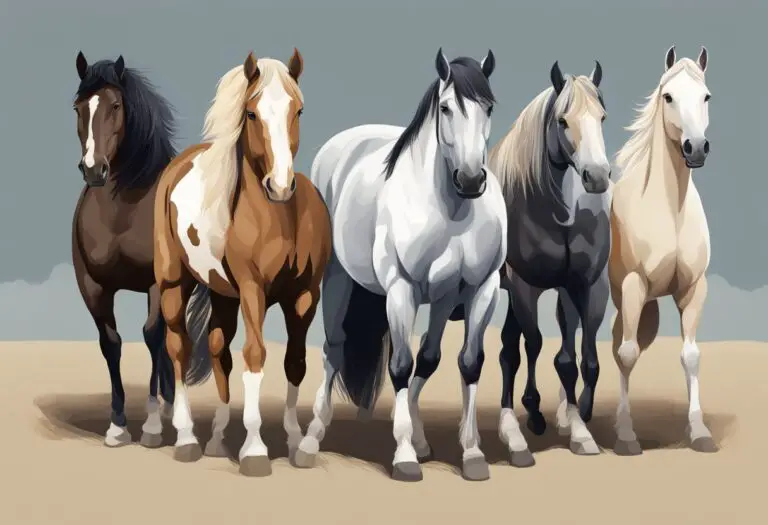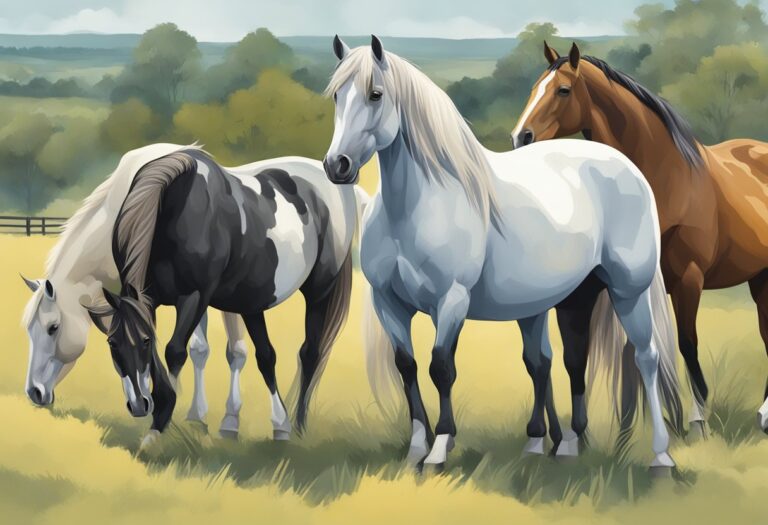When Did Specific Horse Breeds Emerge? A Historical Overview
Horse breeds have been developed and refined over centuries to meet the needs of humans for transportation, work, and sport. Each breed has its own unique characteristics, such as size, color, and temperament, that make it well-suited for particular tasks. But when did specific horse breeds emerge? This question has fascinated equine enthusiasts and historians alike, as it sheds light on the evolution of human-horse relationships.
One of the oldest known horse breeds is the Arabian, which originated in the Arabian Peninsula around 3000 BC. These horses were prized for their speed, endurance, and beauty, and were used for transportation, warfare, and breeding. They were also highly valued by nomadic tribes, who relied on them for survival in harsh desert environments. Over time, Arabian horses were exported to other parts of the world, where they were crossed with local breeds to create new types of horses.
Another well-known horse breed is the Thoroughbred, which was developed in England in the 18th century for horse racing. Thoroughbreds are known for their speed, agility, and stamina, and have been used in horse racing, polo, and other sports. They are also popular for crossbreeding with other breeds to create new types of horses. The history of horse breeding is a fascinating subject that reveals much about human culture, technology, and innovation.
Origins of Horse Domestication

Horses have been domesticated for thousands of years, with the exact timeline still being debated by experts. However, it is believed that the domestication of horses began around 4000 BCE in the Eurasian steppes.
The domestication of horses allowed for faster transportation and increased agricultural productivity. It also played a significant role in warfare, as horses were used as mounts for soldiers.
The earliest evidence of horse domestication comes from archaeological sites in Kazakhstan and Ukraine. These sites show that horses were being ridden and used for transportation and hunting as early as 3500 BCE.
It is believed that the domestication of horses played a significant role in the development of many horse breeds. As humans began to selectively breed horses for specific traits, such as speed or strength, different breeds emerged.
Overall, the domestication of horses has had a significant impact on human history and continues to play an important role in various industries today.
Ancient Horse Breeds

Horses have been domesticated for thousands of years, and some breeds have been around for centuries. In this section, we will explore some of the ancient horse breeds that have been around for a long time.
Tarpan and Przewalski’s Horses
The Tarpan horse, also known as the Eurasian wild horse, was a prehistoric horse breed that roamed Europe and Asia during the last ice age. It was a small, hardy horse that lived in herds and was hunted by early humans. Unfortunately, the Tarpan became extinct in the late 19th century.
Przewalski’s horse, also known as the Mongolian wild horse, is a close relative of the Tarpan and is the only truly wild horse breed left in the world. It is native to the steppes of Central Asia and has been used as a mount by the Mongolian people for centuries. It was almost extinct in the 20th century, but conservation efforts have helped to increase its population.
Arabian Horses
The Arabian horse is one of the oldest and most famous horse breeds in the world. It originated in the Arabian Peninsula and was used by Bedouin tribes for transportation, warfare, and racing. The Arabian horse is known for its beauty, speed, and endurance. It has a distinctive head shape, with a dished profile and large nostrils, and is often used as a foundation breed for other horse breeds.
Akhal-Teke Horses
The Akhal-Teke horse is an ancient breed that originated in Turkmenistan. It is known for its metallic coat, which shines in the sunlight, and its speed and endurance. The Akhal-Teke was used as a warhorse by the Turkmen tribes and was highly prized for its beauty and stamina. Today, it is used for racing and sport, as well as for riding and driving.
In conclusion, these ancient horse breeds have been around for centuries and have played an important role in human history. They are still admired and respected for their beauty, speed, and endurance, and continue to be used for a variety of purposes.
Medieval Horse Breeds

During the medieval period, horses were essential for transportation, warfare, and agriculture. Different horse breeds emerged during this time to fulfill specific needs. In this section, we will discuss three medieval horse breeds: Destrier, Courser, and Palfrey.
Destrier
The Destrier was a large and powerful horse breed that was primarily used for warfare. It was bred for strength, endurance, and agility. The Destrier was capable of carrying a fully armored knight into battle. It was also trained to charge into enemy lines and trample infantry soldiers. The breed’s popularity declined after the introduction of firearms in warfare.
Courser
The Courser was a fast and agile horse breed that was used for hunting and racing. It was bred for speed and endurance. The Courser was prized for its ability to catch prey and outrun other horses. It was also used for long-distance travel. The breed’s popularity declined after the invention of the Thoroughbred breed in the 17th century.
Palfrey
The Palfrey was a gentle and comfortable horse breed that was primarily used for transportation and leisure activities. It was bred for a smooth and comfortable gait, making it ideal for long-distance travel. The Palfrey was also popular among women and nobles for its comfortable ride. The breed’s popularity declined after the introduction of faster and more versatile horse breeds.
In conclusion, the medieval period saw the emergence of different horse breeds that were bred for specific purposes. The Destrier, Courser, and Palfrey were three such breeds that played an important role in medieval society.
Development of Modern Breeds

Thoroughbreds
Thoroughbreds are a breed of horse that originated in England during the 17th and 18th centuries. They were developed for racing and were bred to be fast and agile. Thoroughbreds are known for their speed, athleticism, and endurance. They are commonly used for racing, show jumping, and eventing.
The breed was developed by breeding native horses with imported Arabian, Barb, and Turkoman horses. The result was a horse that was faster and more athletic than any other breed at the time. Thoroughbreds were first imported to America in the early 1700s, and they quickly became popular for racing.
Quarter Horses
The American Quarter Horse is a breed of horse that was developed in the United States during the 17th century. They were bred for their speed, agility, and strength, and were used for ranch work, racing, and rodeo events. The breed is known for its versatility and is used for a variety of disciplines, including racing, rodeo, and trail riding.
The breed was developed by breeding native horses with imported English Thoroughbreds. The result was a horse that was fast, strong, and agile. Quarter Horses are known for their short, powerful build and their ability to turn on a dime.
Appaloosas
The Appaloosa is a breed of horse that is known for its distinctive coat pattern. They were originally bred by the Nez Perce tribe in what is now Idaho, and were used for hunting, war, and transportation. The breed was almost wiped out during the Nez Perce War in 1877, but was saved by a few dedicated breeders.
The Appaloosa breed was developed by breeding native horses with Spanish horses and other breeds. The result was a horse that was strong, fast, and had a unique coat pattern. Today, Appaloosas are used for a variety of disciplines, including racing, rodeo, and trail riding. They are known for their intelligence, versatility, and striking appearance.
Influence of Geographical Regions

European Breeds
The horse breeds that emerged in Europe were heavily influenced by the geography and climate of the region. The cold winters and rugged terrain of the northern regions gave rise to breeds such as the Icelandic horse, which is known for its hardiness and endurance. The warm, fertile lands of the Mediterranean region, on the other hand, gave rise to breeds such as the Andalusian, which is known for its elegance and agility.
Asian Breeds
The horse breeds that emerged in Asia were shaped by the vast and diverse landscape of the continent. The nomadic tribes of Central Asia developed breeds such as the Akhal-Teke, which is known for its speed and endurance. The hot and humid regions of Southeast Asia gave rise to breeds such as the Marwari, which is known for its unique curved ears.
American Breeds
The horse breeds that emerged in the Americas were heavily influenced by the history and culture of the region. The Mustang, for example, is a breed that evolved from the horses brought to the continent by Spanish conquistadors. The Appaloosa, on the other hand, is a breed that was developed by the Nez Perce tribe in the Pacific Northwest region of the United States.
Overall, the geography and history of a region played a significant role in shaping the horse breeds that emerged from it. Whether it was the rugged terrain of northern Europe or the nomadic lifestyle of Central Asia, each region left its mark on the breeds that emerged from it.
Selective Breeding and Breed Standards

Selective breeding is the process of choosing certain horses with desirable traits to mate and produce offspring with those same traits. The practice of selective breeding has been used for centuries to create the various horse breeds we know today.
Breed standards are a set of guidelines that describe the ideal characteristics of a particular horse breed. These standards include physical features such as height, weight, and color, as well as personality traits and abilities. These standards are used to evaluate horses in shows and competitions.
Many horse breeds emerged as a result of selective breeding and the establishment of breed standards. For example, the Thoroughbred breed was created in England in the 17th and 18th centuries by breeding Arabian, Barb, and Turkoman horses with native English mares. The Arabian breed, on the other hand, has been selectively bred for thousands of years by Bedouin tribes in the Arabian Peninsula for its speed, endurance, and beauty.
Selective breeding and breed standards have also been used to improve the health and performance of certain breeds. For example, the American Quarter Horse, which was originally bred for short-distance racing, has been selectively bred to excel in other disciplines such as cutting, reining, and rodeo events.
Overall, selective breeding and breed standards have played a crucial role in the development of horse breeds throughout history. By carefully selecting and breeding horses with desirable traits, breeders have been able to create horses that excel in a variety of disciplines and have become beloved companions and athletes.
Conservation of Rare Breeds

Conservation of rare horse breeds is crucial to maintain genetic diversity and preserve the history of these breeds. Many rare horse breeds have been in existence for centuries and have contributed to the development of other breeds. However, due to changes in agriculture and transportation, many of these breeds have become endangered.
Conservation efforts for rare horse breeds involve breeding programs, genetic testing, and preservation of breed registries. The goal is to maintain genetic diversity and prevent inbreeding, which can lead to health problems and reduced fertility.
One example of a rare horse breed that has been successfully conserved is the Caspian horse. This breed was thought to be extinct until a small population was discovered in Iran in the 1960s. A breeding program was established, and the breed was reintroduced to the world. Today, there are approximately 1500 Caspian horses worldwide.
Conservation of rare horse breeds is not only important for preserving genetic diversity but also for maintaining cultural heritage. Many rare breeds have historical significance and are an important part of a country’s identity. By conserving these breeds, we can ensure that future generations can appreciate and learn from their unique history.
In conclusion, conservation of rare horse breeds is essential to maintain genetic diversity and preserve cultural heritage. Through breeding programs, genetic testing, and preservation of breed registries, we can ensure the survival of these important breeds.

